




Welcome to the 12th issue of Green Matters. This issue is based on the premise that “what gets measured gets managed,” a concept usually attributed to management theorist Peter Drucker.
While many have a specific idea of what makes a Teton County resident “rich,” those who know where to look (and listen) understand that our community could have only grown into what it is today because of our extraordinary natural resources. We are rich in air, water, wildlife, flora, and fauna.
The articles within this issue address just a few considerations of how we monitor and manage some of the resources that make us so rich: our air quality, water quality, the future of tracking these indicators as a community, and individual businesses taking responsibility for becoming more environmentally responsible.
The programs run by the Riverwind Foundation are possible because of the excellent work of our Executive Director, Tim O’Donoghue, and our Riverwind Foundation Board of Directors. Our program team members include John Rutter, Lindsey Ehinger, Megan Kerns, and Liv Sears. Finally, please join us in thanking our sponsors and community partners for sharing their passion and support of our work.
CARLYANN EDWARDS Program Manager, Riverwind FoundationABOUT THE RIVERWIND FOUNDATION 04
THE FUTURE OF ECOSYSTEM REPORTING IN JACKSON HOLE: CLIMATE IS KEY 06
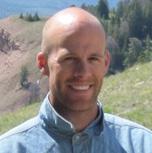


THE SNAKE RIVER HEADWATERS: CLEAN, CLEAR, AND COLD? 12
MONITORING AND MANAGING TETON COUNTY AIR QUALITY 16 MAP: GOING GREEN 20 BEST PROGRAM UPDATES 22
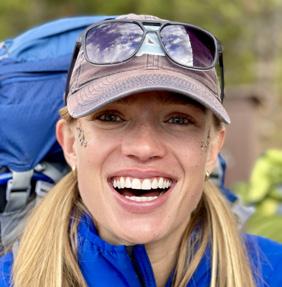

The mission of the Riverwind Foundation is to unite efforts to minimize resident and visitor impacts on the Greater Yellowstone and other ecosystems now and for future generations.
Through our destination management and sustainability programs, the Riverwind Foundation has been able to:
Train and assist over 400 businesses and organizations in sustainability planning and practices, including doubling the Sustainable Business Leaders.
Inventory the sustainability and responsible tourism plans, policies, and activities of our entire community and destination.
Provide in-depth sustainability technical assistance and assessments to increase sustainability performance and recognition for the most committed local sustainability leaders in our community through the BEST Certification Program.
Publish and distribute the Jackson Hole Sustainability Code of Conduct, Jackson Hole Sustainability Report Card, Sustainable Business Guide, and Green Matters in Jackson Hole magazine to over 100,000 visitors and residents.
Coordinate the development of our community’s Sustainable Destination Management Plan.
Through this work, we’ve contributed to our community’s efforts to:
Reduce energy, fuel, and water use; waste, and carbon emissions
Increase profitability and employee retention
Improve air and water quality
Reduce traffic and parking congestion
Protect wildlife and wild lands
Grow the next generation of green leaders
riverwindfoundation.org



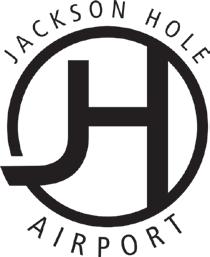




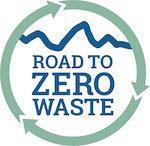




 CARLYANN EDWARDS
CARLYANN EDWARDS

Dozens, if not hundreds, of sustainability reporting frameworks and guidelines exist today. These provide standards for the assessment and benchmarking between areas like green building and responsible business operations. However, few guidelines exist to serve the same purpose in our natural world.
Wildlife biologists to tourism experts have expressed the need for some sort of centralized body to establish indicators aligned between national, regional, and local public land managers, NGOs, and other interested parties in the area.
While a mountain town-specific set of indicators is ideal (encompassing surrounding public lands, of course), you pose the risk of oversimplifying things as no two ecosystems are alike.
For the most part, the few indicators that are tracked by multiple parties fall into buckets like human/wildlife interactions, covering the number of vehicle-caused mortalities by species, or mitigation strategies like the percentage of critical habitat protected. Essentially, developing indicators that cross the boundaries of these for biological systems is complicated due to their natural variability and the challenge of interpreting results.
Jackson and Teton County’s joint Comprehensive Plan’s first Principle (1.1) is to “Maintain healthy populations of all native species.” Animals aside, Teton County is home to over 1,300 native plant species, according to Teton Conservation District.

It’s daunting to think about tracking all 1,300 native plants, as well as indicators related to wildlife, air, and water. Historically, our tactic as a community has been to monitor a few representative species, like the grizzly bear or yellow-billed cuckoo. Currently, the Teton County Long Range Planning website includes documents that could be considered indicator reports within a specific area.
For example, the Teton County Annual Indicator Report is tied to the Comprehensive Plan. Bridger Teton National Forest has its own set of indicators, while Grand Teton National Park publishes its annual Vital Signs Report. Then, NGOs like Teton Conservation District, the Jackson Hole Conservation Alliance, and Jackson Hole Wildlife Foundation collect a whole slew of data relevant and curated to their missions.

The updated Comprehensive Plan, adopted in 2020, reevaluated what we tracked and reported annually. It also directed a shift from tracking
policy-related indicators to tying indicators directly to specific goals identified in each Comprehensive Plan chapter. However, the updated plan has identified some indicators for development, part of which will be spearheaded by Tanya Anderson, the Town of Jackson’s Ecosystems Stewardship Administrator.
Anderson started the position in May. She mentioned that this area in particular is one of the five key components of her pages-long job description - and likely the portion that will take the longest and require the most collaboration.
Anderson explained that we also need to define our goals further. For example, principle 1.2 of the Comprehensive Plan is to “preserve
“Essentially, developing indicators that cross the boundaries of these biological systems is complicated...”
and enhance surface water and groundwater quality,” which currently lacks additional details that need to be outlined on how we will measure and track that.
“Indicators need to be connected to a goal, and every community has different goals. Climate change might be the easiest thing if you say that everyone should have a goal of Net Zero by 2050 or something like that,” Anderson said. “In order to have unified indicators, there must be unified goals.”
Bryan Schuman, an Associate Professor of Paleohydrology, Paleoclimatology, and Paleoecology at the University of Wyoming, and one of the lead authors on the Greater Yellowstone Ecosystem Climate Change Assessment, is currently studying the ways we maintain ecosystem health and the human connections to the ecosystem in the context of a changing climate.
There are two different sides to the climate issue. One side we can think

of is the stewardship component, which famously encompasses emissions. In other words, are we doing a good job of mitigating our impact on the climate? The other side is climate resilience, which grapples with the fact that we only have so much control over the global emissions that will shape our climate.
“We need to track and understand how the resources and ecosystems that we live in and care about are changing, how we prepare for those changes and try to maintain as much of what we value those systems in as healthy of a state as possible,” Schuman said.
His team hopes to provide multiple scenarios that they can share broadly with the public, with the idea that
“We need to track and understand how the resources and ecosystems that we live in and care about are changing...”Frances Conner
people may be able to conceptualize and understand the consequences of what might change. Specific areas he thinks communities will be most interested in include the number of smoky days per year, the water reduction in Jackson Lake, and precipitation patterns.
“One of the outcomes I took away most from the Greater Yellowstone Climate Assessment was the likelihood that we’re gonna see a major transition away from snow across the region,” Schuman said.
“The winter precipitation is much more likely to come as rain in the future, even up to 10,000 feet or higher. Understanding and tracking how fast that change is playing out and how severely that change is taking place is something that we need to stay on top of because it has consequences for everything from the water supply to those smoky days because it affects the likelihood of fire.”
Schuman and his team have recognized the need for standardized climate reporting. As a result, they have identified it as a target for their future research, likely hosting workshops with communities in Northwest Wyoming as early as 2023.
“I think this is something that a lot of different people are trying to grapple with right now, but there’s not yet been anyone or any group or agency that has come forward,” he said.
While some efforts are underway to harmonize our data collection efforts, we have a long way to go. We can continue to build momentum by leveraging indicators that align with our community goals, including Jackson’s 2030 net zero resolution. As a community, we’ve consistently had to develop plans, goals, infrastructure, and representative indicators that are just as unique to our community as the landscape.
Carlyann Edwards is a Program Manager for the Riverwind Foundation. She moved to Jackson full-time after spending two seasons working seasonally in Yellowstone National Park. Before the Riverwind Foundation, she worked on the Climate and Sustainability Strategy Team at PricewaterhouseCoopers and covered Economic Indicators at Bloomberg. She graduated with distinction from UNC-Chapel Hill with a B.A. in Business Journalism and a B.A. in Environmental Studies while minoring in Music. In her free time, she enjoys connecting with the land through skiing, trail running, kayaking, and singing in Jackson Hole’s Community Choir.
Originating north of our community in the Teton Wilderness, the mighty Snake River brings life to our valley. The Snake River Headwaters (“Headwaters”) contain some of the healthiest trout fisheries and most intact streams left in the lower 48 states, which provide unparalleled recreational opportunities for residents and millions of tourists each year. These water bodies were nationally recognized by the Craig Thomas Snake Headwaters Legacy Act of 2008, which designated segments from thirteen of our rivers and streams under the Wild and Scenic Rivers System for their outstandingly remarkable values.
We are fortunate to live where we do; there is no community impeding or polluting the water upstream from us. However, due to Wyoming’s adoption of the Snake River Compact in 1949, 96% of the water moving through the Snake is owned and allocated to downstream users. In recent years, upstream storage has been impacted by widespread drought. At
present, Jackson Lake is 18% full and Palisades Reservoir is only 10% full. Along with the drought, our water use has also intensified. This past summer, overnight irrigation was at times so heavily used that the Town asked residents at one well to cut back use to ensure there would be adequate water pressure in case of a firefighting emergency.
Water use has a direct impact on our aquifer, which deserves the utmost respect. The Snake River Aquifer (“Aquifer”) was officially recognized as a Sole Source Aquifer by the US Environmental Protection Agency in 1991 as the only viable drinking water source for the residents of Teton County. Due to the high porosity of the cobble and gravel beneath our feet, surface and groundwater are inextricably linked. Historically, the vast amount of water moving through our Aquifer acted as an effective buffer from the negative impacts of development. However, we are now experiencing changes that demand our attention and demonstrate the
increasing fragility of our visible and invisible river.

Three important contaminants to understand are per- and polyfluoroalkyl substances (PFAS), nutrients, and fecal bacteria. PFAS are a widely-used suite of thousands of chemicals that break down very slowly and have been linked to harmful health effects. Due to their required use of Aqueous Film Forming Foams, the JH Airport introduced a plume of these contaminants into the soil and Aquifer. PFAS are a relatively new contaminant of great concern and public health research (including detection, toxicity, and remediation) is still developing.
Most county residents use septic tanks to manage their wastewater. Perched in the porous and shallow unsaturated zone, these septic systems often do not have adequate soil conditions to properly treat wastewater. This results in effluent entering our Aquifer and has led to unsafe nitrate concentrations in residents’ drinking water for years. Changing salinity and pH regimes have been shown to interact with nutrient cycling processes (e.g. nitrate/nitrite, ammonia/ ammonium, total nitrogen, and total phosphorus) to further impact water quality. Although nutrient pollution has many potential sources, domesticated animal waste is of particular importance to our valley, where thousands of pounds
of processed, nutrient-rich dog poop hit the ground every day.
Fecal matter is also rich in E.coli; an indicator of bacterial contamination and the basis for official Wyoming Department of Environmental Quality impairments in both Fish Creek and Flat Creek. While contributions from livestock and pets cannot be ignored, it was recently determined that human wastewater was the dominant source of quantifiable fecal contamination in both creeks. We are letting poop pollute our cherished surface waters and only source of drinking water.
Water clarity is a key principle of water quality. Clarity is typically assessed by measuring turbidity and total suspended solids (TSS). While TSS quantifies suspended particles in water, turbidity is an optical determination of clarity based on the amount of light scattered by the suspended particles. Stormwater (precipitation unable to infiltrate through impervious surfaces) carries sediment and other pollutants into waterbodies. Sediment, the result of erosive forces across the landscape, is the most common pollutant in surface waters nationwide and is introduced locally through processes like floodplain development, winter road preparations, and dredge/ fill material disposal. These fine particles eventually settle and alter the structure of the riverbed while also clouding out our waterways, diminishing their beauty and function.
Water use is the cornerstone of our community’s development. Immense green lawns, extravagant ornamental landscaping, luxurious golf courses, and hundreds of private ponds and streams dominate our valley. The resultant withdrawals, diversions, and impoundments make it easier for surface waters to warm up. Warmer water holds less oxygen, amplifies the toxic impact of nutrient pollution, and triggers algal blooms. Algal blooms (in standing and flowing water) are increasing in frequency and intensity across the planet and harm important (economic and public health) human-nature relationships.
In recent years, high water temperatures (approaching or exceeding 20° C/68° F) have increasingly limited fishing opportunities for residents and visitors alike. Elevated water temperatures are not a new issue, however: Flat Creek has been impaired by altered coldwater habitat for over twenty years. For how much longer can we afford our current relationship with water?
Wyoming does not require protection plans for public or private drinking water systems. Homeowners are also not required to test their private wells for contaminants. Residents and visitors alike must therefore work together to ensure that the surface water we play on and the drinking water we rely on remain healthy.
We have an irrefutable responsibility to manage our water properly. As the great Wendell Berry once wrote: “Do unto those downstream as you would have those upstream do unto you.” Thankfully, there are steps we can take.
Ask questions: Do you know where your drinking water comes from?
•
•
Do you know what’s in it? Are you connected to the sewer system? When was the last time you had your septic inspected? How is the water you’re fishing? What about the stretch you’re floating? Check out mountainneighbor.org and powjh.org for more information on our ecology, water resource issues, and relevant public health resources.
Despite various challenges, Teton County and the Town of Jackson have made significant strides to address the forces degrading our water resources. This is a good start. Through consistent monitoring, we can deepen our understanding of changing surface and groundwater conditions in order to take meaningful action toward restoring and protecting these precious resources. We are those upstream. We must work together to effectuate clean, clear, and cold water for all life reliant upon our magnificent Headwaters.

Air quality and visibility are invaluable natural resources. Both local and distant air pollutant sources affect air quality in Teton County. Protecting the quality of the air resource is a multi-faceted job that includes active research and monitoring; coordination with other organizations on pollution controls when pollution is likely to affect our community; and education to visitors about the importance of clean, healthy air.
The Environmental Protection Agency and the Wyoming Department of Environmental Quality Air Quality Division (DEQ) share responsibilities in regulating air quality, including permitting and monitoring air quality and emissions. Teton Conservation District partners with these regulatory agencies by providing funding and supporting the operation of monitoring instruments, as well as communicating outcomes from what we are learning.

Air quality monitors are often characterized as low-cost air sensors, temporary or permanent monitors. Each of these has been deployed locally over time for various purposes. These sensors include the PurpleAir brand sensor that measures particulate matter (PM) levels. PM is the main health hazard attributed to wildfire smoke. These microscopic particles can irritate eyes and respiratory systems and can aggravate asthma and chronic heart and lung diseases.
Approximately 20 of these PurpleAir sensors are sited across Teton County. Their monitoring results are publicly accessible and feed into some of the real-time, publicly available air quality indexes reported for our county. An example application of these sensors is the device located at the Jackson Hole High School, which provides information allowing School District staff to quantify air quality conditions and determine if outdoor activities, such as sports events, will be held.
Temporary monitors have been used to answer specific human and environmental health questions. The most recent and relevant temporary monitoring occurred from 20182019 on the National Elk Refuge. The DEQ is completing a statewide characterization of air quality in all micropolitan areas, and the Town of Jackson fits the criteria as a study candidate. A DEQ mobile air quality station (a mobile trailer full of instruments!) was sited downwind of Jackson for one year to assess the Town’s air quality. The station came with meteorological equipment, a camera for depicting visibility, and instruments to measure pollutants, including ozone, oxides of nitrogen, sulfur dioxide, hydrocarbons, and particulate matter (PM).
In addition, Teton Conservation District and several stakeholders funded a study by Inversion Labs to deploy temporary monitors to assess air quality impacts from vehicle emissions. This 2018 project used handheld instruments to measure particulate matter and ozone in areas with high traffic in both winter and summer.
Long-term instruments are also in place in several locations, documenting current conditions and trends. Two instruments worth noting are the station along High School Road and another near the Kelly Campus of the Teton Science Schools.
The first instrument, the Jackson State or Local Air Monitoring Stations (SLAMS), is the current iteration of a decades-long monitoring effort, which
received updated instrumentation in 2021. As a result, the public can now access real-time information collected hourly. The data collected includes a particulate matter of 2.5 microns and smaller (PM2.5), as well as PM10, which measures particulate matter between 2.5 and 10 microns. The second permanent instrument has been stationed on Grand Teton National Park lands since 2011 and primarily measures ozone but also captures visibility readings with a camera. Visibility is measured because it is within a Class 1 Airshed designated to protect air quality for visibility.
First, air quality and visibility are invaluable natural resources. Six air pollutants are regulated and monitored to assess compliance to protect public health and welfare. Teton County’s air quality is generally good based on measurements of these pollutants. Monitoring shows that our county’s most acute air quality pollutant is regional wildfire smoke, which can cause adverse health effects. Fine particles (PM2.5), which include wildfire smoke, are measured continuously using lowcost and permanent air sensors. This monitoring supports short-term decision-making, such as whether to conduct prolonged outdoor recreation. This data also helps atrisk populations manage their risk.
The Teton Conservation District commissioned the vehicle emissions study because ground transportation has been identified as the county’s
largest source of greenhouse gas emissions. The study targeted times and locations of the highest pollution, such as during wintertime inversions in areas with numerous school buses.
Findings were that background levels of particulate matter were very low, and ozone concentrations were normal. However, brief and localized spikes in contaminant concentrations could be found adjacent to point sources, including accelerating vehicles and exhaust vents from cooking facilities.
Data from the permanent Jackson SLAMS site and the temporary Jackson air characterization site have shown few exceedances in ambient air quality beyond the healthiest level of air quality. Air quality degradation from the highest (“Good”) level down to the second best (“Moderate”) level is primarily due to regional wildfire smoke, as well as what is speculated to be brief periods of localized street sweeping near the instruments.
Across our monitoring efforts, ‘clean’ air has been observed and measured in Teton County. In addition, certain areas of interest that have been studied, such as brake emissions at the base of Teton Pass, vehicle exhaust in high-traffic areas, and
short-term increases in pollutants that dissipate rapidly, have been recorded.
Data shows that regional wildfire smoke has been the source of the most significant impact on local air quality in the past decade. Fortunately, regulatory agencies have installed local instrumentation that collects and shares real-time data that measures air quality parameters from our known contaminant sources.
The EPA’s Air Now website offers a Fire and Smoke Map. Zoom into the Jackson area and click on the square to see the current estimated Air Quality Index (AQI) value.
Also through the EPA, you can find the Interactive Map of Air Quality (AQI) to see information from nearby areas to estimate local air quality.
See the EPA’s Activity Guides to learn ways to protect your health when the AQI reaches unhealthy levels. Real-time local PM2.5 information is available through https:// www.wyvisnet.com/ and Teton Conservation District’s website.
Teton Conservation District is a local government entity whose mission is to work with the community in conserving natural resources for the health and benefit of people and the environment. We are a partnering agency that depends on relationships with stakeholders to support the community’s goals. TCD recently published the Mountain Neighbor Handbook as a resource for the Teton County resident that has lived here for a lifetime or moved here yesterday. Robb Sgroi serves as the Land Resource Specialist. Robb’s interests span air and soil resources, wildfire risk reduction, and advancing the community food system. This includes program development and administration. Robb appreciates the opportunities provided to TCD to work with the public, agencies, and stakeholders to advance the community’s interests in natural resource conservation.
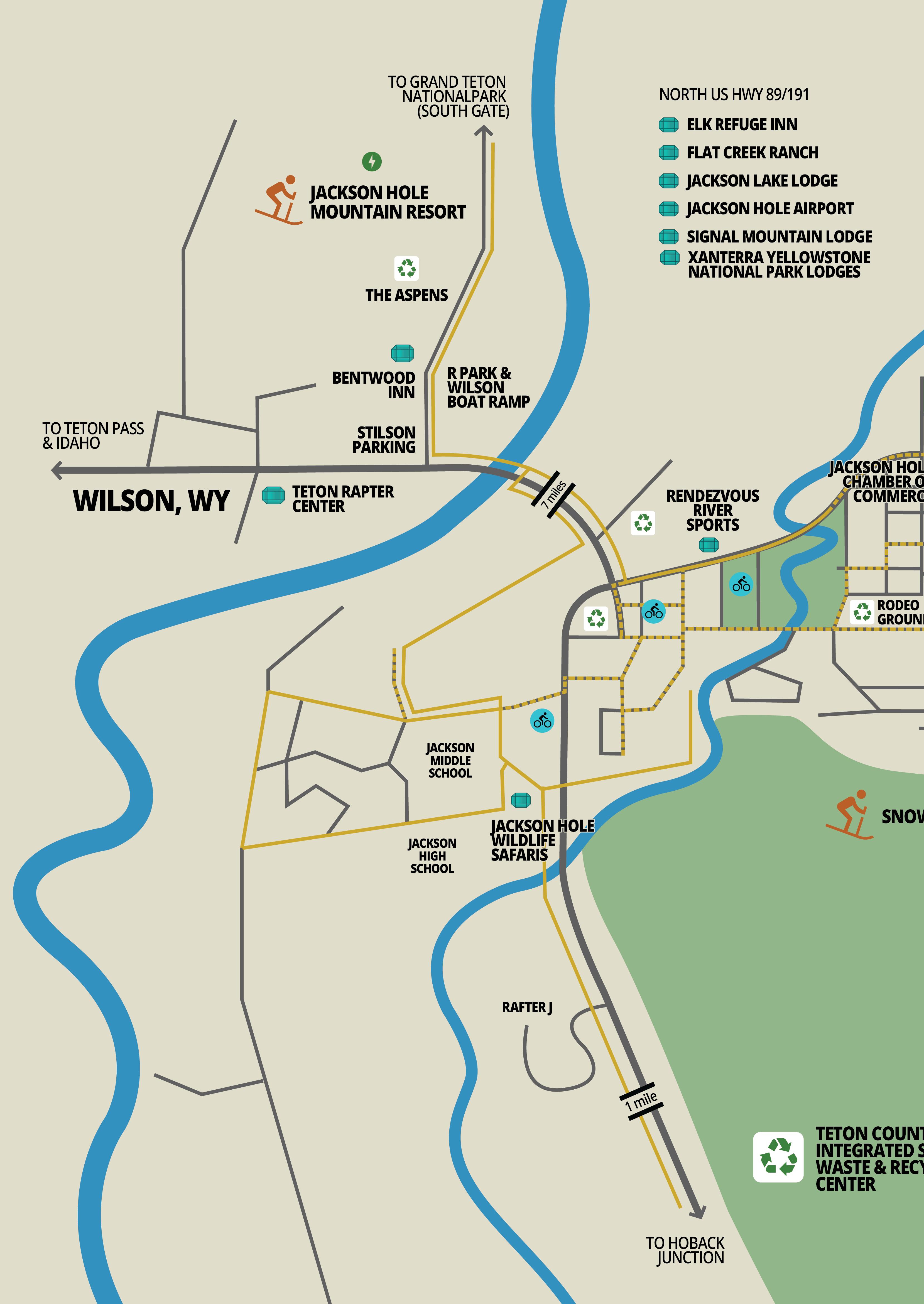
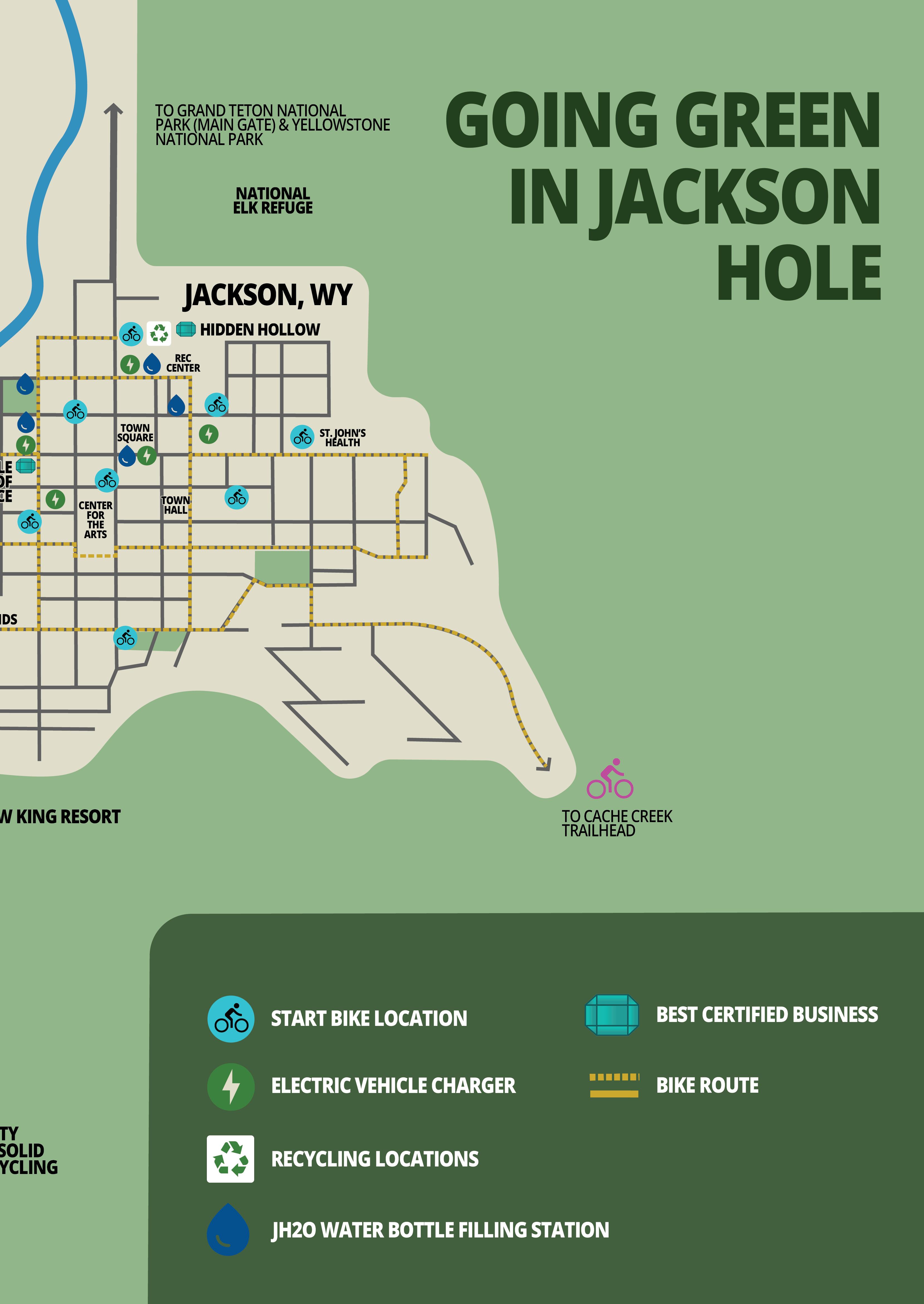
Both Rendezvous River Sports and the Teton Raptor Center have achieved the Business Emerald Sustainability Tier (“BEST”) level of sustainability performance from the Riverwind Foundation, the originator of the BEST Program.
The standards in the BEST program are comparable to the world’s most rigorous and comprehensive environmental, community, and economic sustainability criteria. Rendezvous River Sports and the Teton Raptor Center join a growing group of businesses and organizations to achieve this thirdparty sustainability certification.
The BEST program was created to provide an opportunity and platform for those Sustainable Business Leaders that want to elevate their sustainability practices to higher levels of environmental stewardship, social responsibility, and economic vitality.

Rendezvous River Sports is an inspiring example of repurposing equipment and supplies, using a variety of tactics for lowering carbon emissions, and supporting a long list of community organizations and
initiatives. Led by Aaron Pruzan’s effective advocacy for environmental stewardship and passion for providing outstanding experiences on our waterways, Rendezvous River Sports has demonstrated that a recreation business can give back to our natural resources while providing jobs and contributing to our local economy.
“Our whole team is excited to have earned our BEST certification,” said Rendezvous Owner Aaron Pruzan. “This rigorous process is a great learning experience and has helped us take our sustainability initiatives to the next level. We will continue to work to find creative and effective ways to minimize waste, use less energy, be outstanding stewards of the rivers and lakes we are privileged to guide on, and help our community have a balanced approach to providing excellent experiences for our guests and being an amazing place to live.”
The Teton Raptor Center is the first community member to be certified with the upgraded, more comprehensive BEST standard. Their organizational and personal commitment to sustainability in their
facility development, operations, and plans for the future demonstrates how a determined organization can in short order prioritize and institute environmental, social, and economic policies and practices. The Teton Raptor Center has established itself as a leader in minimizing waste, reducing carbon emissions, and contributing to the ecological consciousness of our community.
Amy McCarthy, Teton Raptor Center’s Executive Director said “The BEST certification process was
rigorous and rewarding. We are an organization dedicated to keeping wild birds wild, which is achieved through the care and conservation of resources within our own operations and through communication, connection, and collaboration with our community and our visitors. For Teton Raptor Center, achieving BEST certification may be a feather in our cap, so to speak, but the real work is ahead, to maintain and expand our sustainability initiatives and to use those efforts to inspire others.”

